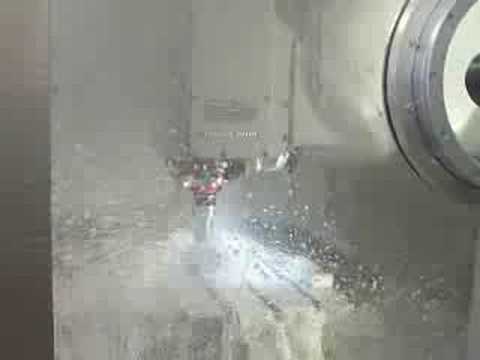Hi Peter,
As I said in my direct reply, .005" is so imprecise that it would
cause a machine shop to junk any CNC milling center that couldn’t do
better. Normal machine centers hold .0005" or better. .0002" is
pretty typical. For monumental sculpture, nobody’d care if you were.
005" out, but that’s the thickness of a piece of paper. For small
stuff decorative stuff, it might not matter. For any kinds of parts
where two of them would interact with each other somehow, it’d pretty
much guarantee scrap parts.
The issue isn’t exactly the size of the machine, so your idea about
"hiring big people to carve big statues" doesn’t exactly relate. The
issue is how rigid the machine is, and how much it deflects under
load. The “arm” style bots you’ve been looking at have long
cantilevered spans that articulate on each other, so that a little
slop in the shoulder joint adds to the slop in the elbow, and both of
them add to the slop in the wrist. By the time we get out to the
cutting head, all that slop means the machine doesn’t exactly know
where the cutter really is. It knows how many degrees of turn it set
all its joints to, but it doesn’t have any about what
they actually did, or how much those giant arms are bending under
the cutting load. It also doesn’t know anything about how much the
cutter’s bending under the load, or how much force the cutter’s
exerting, in which direction. (which can either pull the arm forward
into the cut, or keep it from advancing as fast as the machine wants
to, depending on circumstances.) For monumental work (or welding a
car together, which is what these things were originally built for.).
005" is plenty close enough. For serious precision work, it’s not
even in the game.
Milling machines and lathes for serious work are built on a very
different plan. They’re built so that each axis of movement is
isolated from the others, so that errors in one axis don’t foul up
movements in any of the others. They’re also built much more
solidly. A CNC mill that can handle a workpiece 30x16x15 will weigh
24,000 pounds, probably two or three times what those little
arm-bots weigh. The problem with them for monumental sculpture is
that the machine needs to be big enough to swallow whatever it’s
working on. You can’t pull it up to a marble block the way those
arm-bots can.
I’ve never been entirely clear on just what you’re trying to make.
Sometimes you’re talking about carving a jade boulder, and sometimes
you’re talking about figurines. You do realize that it’s going to
take two entirely different machines to handle both jobs, right?
Rather than cruising around looking at machines, (which is neat)
you’d be better served to figure out (or explain) what kind of part
you’re trying to make, and then proceeding from there to figure out
what kind of machine you need.
Regards,
Brian.
